History
The Waikīkī Aquarium has a long and venerable history. Open on March 19, 1904, it is the second-oldest public aquarium in the United States. Then known as the Honolulu Aquarium, it was established as a commercial venture by the Honolulu Rapid Transit and Land Company, who wished to “show the world the riches of Hawaii’s reefs.”
As directors of the transit company, Charles M. Cooke gave a gift of $8,000 for the Aquarium’s construction, and James B. Castle contributed the lease for the building site. They also had a practical objective in using the Aquarium as a means of enticing passengers to ride to the end of the new trolley line in Kapi‘olani Park, where the Aquarium was located. The trolley terminus was across Kalakaua Avenue from the Aquarium, and is now marked by a jogger’s rest area, near the current tennis courts.
The Aquarium opened with 35 tanks and 400 marine organisms, and during its first year, the internationally renowned biologist David Starr Jordan proclaimed it as having the finest collection of fishes in the world. Considered state-of-the-art at that time, the Aquarium also received positive comments from such notable visitors of that era as William Jennings Bryan and Jack London.
Frederick A. Potter, a clerk for the Honolulu Rapid Transit Company, was transferred to manage the Aquarium, becoming the first Director in 1904. Despite his lack of formal training in marine sciences, Potter was a vigorous supporter of Hawaiian ichthyology, and served as Aquarium director until May 1940. Potter’s Angelfish Centropyge potteri, was named in his honor.
1912
For its first 15 years the aquarium operated as a privately financed institution, with display animals collected by local fishermen. In 1912, the C.M. Cooke Estate donated funds for a marine biology laboratory adjoining the Aquarium, beginning its research tradition. The laboratory’s first director, Dr. Charles H. Edmondson, was the first professionally trained marine biologist to live in Hawai‘i. His scientific studies included a classic volume The Reef and Shore Fauna of Hawai‘i. Dr Edmondson promoted research programs in tropical marine biology, and his work paved the way for later University of Hawai‘i marine research laboratories. When the property lease expired in 1919, the Cooke Estate ceded the Aquarium’s property lease to the Territory of Hawai‘i, and the newly formed University of Hawaii assumed administration of the Aquarium and the laboratory.
1940
In 1940 Spencer Tinker was appointed the second director of the Aquarium, after serving on the faculty of the University of Hawai‘i Zoology Department. Tinker was well known for his books on Hawaiian fishes, Pacific crustaceans, and other marine life: his book Hawaiian Fishes, remains a classic. Tinker’s Butterflyfish Chaetodon tinkeri, was named after him. In 1949 the Territorial Legislature funded construction of a new Aquarium building on property about 100 yards south of the original Aquarium site. Tinker directed construction of this new facility, known as the Waikīkī Aquarium, which opened in 1955 and included a saltwater well to supply the display tanks. Today the Aquarium is still housed in the 1955 building, which occupies 2.35 acres of State land on the shoreline at Kapi‘olani Park. Tinker retired in 1973.
During these early years (1919 – 1973) admissions to the Aquarium were deposited to the State General Fund and did not return to the Aquarium for upkeep. This lack of investment resulted in the Aquarium falling into disrepair. Furthermore, there were only seven full-time employees, no aquarium education programs, and the museum section consisted of cases filled with thousands of seashells, with no biology or conservation message. Compounding these difficulties was the moving of the research function of the Aquarium to two new University institutions: the Hawaii Institute of Marine Biology (HIMB) at Coconut Island in Kaneohe Bay, and the Pacific Biomedical Research Center (PBRC). Clearly, the Aquarium was in urgent need of a new purpose and vision.
1975
This call was answered in 1975 when Dr. Leighton Taylor was appointed the third Director. An ichthyologist by training, and a world-renowned expert on sharks, Dr. Taylor was on the U.H. Zoology faculty. He understood the need for a new Aquarium vision committed to education, conservation, and research, and he realized the need to diversify revenue sources. The logo, education department, volunteer program, library, research facility, gift shop, Friends of the Waikiki Aquarium support organization, and the first Exhibits Master Plan (1978) all came into being during his tenure. By accepting donations, memberships, and grants, the Aquarium was able to fund increased services and to renovate exhibits.
During his 11-year tenure, Dr. Taylor produced a revitalized institution, with an annual budget of $1 million and a staff of 23 full-time employees. His stewardship also fostered the development of innovative exhibits, including the chambered nautilus, living corals, and others. He also initiated and supported research programs focused on improving water quality on exhibit tanks, maintaining the health of exhibits specimens, developing nutrition programs, and rearing selected marine life. Taylor’s goby Trimma taylori is named in his honor.
1990
In 1990 Dr. Bruce Carlson was appointed the fourth director, a post he had held in an interim capacity since the departure of Dr. Taylor in 1986. First, as a graduate student working at the Aquarium and later as a staff member, Dr. Carlson had previously worked closely with Dr. Taylor and others to design new and more naturalistic exhibits that focused on the marine life of Hawai‘i and the western Pacific. Dr. Carlson developed a set of clearly defined goals and plans, and initiated the coral propagation program, for which the Aquarium is now world-renowned. He increased staffing to 37 full-time employees and revenues to an over $2 million annual budget.
From 1992 – 1994 Dr. Carlson oversaw the Aquarium’s most extensive renovation since 1955. The $3.2 million investment from the Legislature served the Aquarium’s responsibility to research, education, and conservation through living collections and new visitor facilities. In 2000, the Aquarium was designated a Coastal Ecosystem Learning Center of the Coastal America partnership. In May 2002, Dr. Carlson moved on to accept the challenge of vice president for life sciences at the Georgia Aquarium in Atlanta, then in the planning phase. Three reef animals are named after him: the damselfish Paraglyphidodon carlsoni, and anthias fish Pseudanthias carlsoni, and a nudibranch Halgirda carlsoni.
2004
In April 2004, after an extensive international search, Dr. Andrew Rossiter was appointed the fifth director, joining the Aquarium at the onset of its 100th Anniversary celebrations. Since receiving his Ph.D. from the University of Wales in 1983, his career has taken him to five continents and includes studies on the ecology, evolution, and behavior of animals as diverse as cichlid fishes, freshwater insects, sturgeons, coral reef fishes, birds and tortoises. Results include over 30 scientific papers, four books, and many grants, awards and fellowships for the Royal Society of London, the Linnean Society, and other prestigious institutions. An avid aquarium and pond fish keeper from an early age, in 1997 he left an associate professorship at Ehime University to join the staff of the Lake Biwa Museum in Japan to pursue his dual career passions: research on fish behavior and ecology; and public aquarium design and administration.
As the key factor that attracted him to the Waikīkī Aquarium, he lists its ‘immense potential.’ Dr. Rossiter’s long-term ambition at the Aquarium is to increase public awareness of the ecology and conservation of marine life and reef habitats through aquarium exhibitory, research and education. His goal is to consolidate and build upon the existing exhibitory expertise and the solid foundation lay down by his two predecessors, and to modernize, diversify and expand the Aquarium’s facilities. He also aims to increase the Aquarium’s own research activities and community educational outreach, and for the Aquarium to interact more closely with researchers at the University of Hawai‘i and elsewhere.
Under Dr. Rossiter’s leadership, the Aquarium has undergone a program of gradual renewal, renovation and replacement, with a new mission statement, a renovated and electronic classroom, many new and renovated exhibits, an elegant new jellyfish gallery, and — most recently — a Northwestern Hawaiian Islands exhibit.
As the Aquarium enters its 110th anniversary year in 2014, it will again undergo facility improvements, exhibit revitalizations and welcomed additions, with the first being the green sea turtle exhibit with the six hatchlings on loan from Sea Life Park. The anniversary celebration will also include a high-profile guest lecture series and other exciting events.
Support the Aquarium
Contact Us
Honolulu, HI 96815
(808) 923-9741
Search
- Already a Volunteer?
- Click Here To Sign In

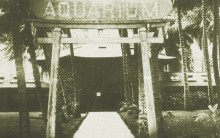

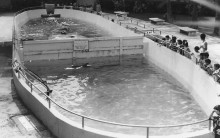
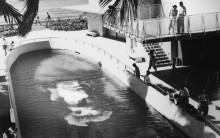
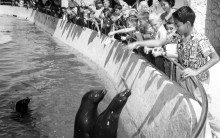
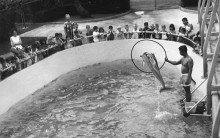
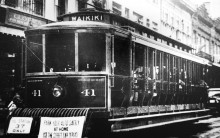

 Donate
Donate
